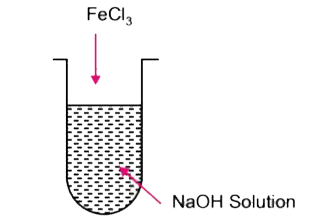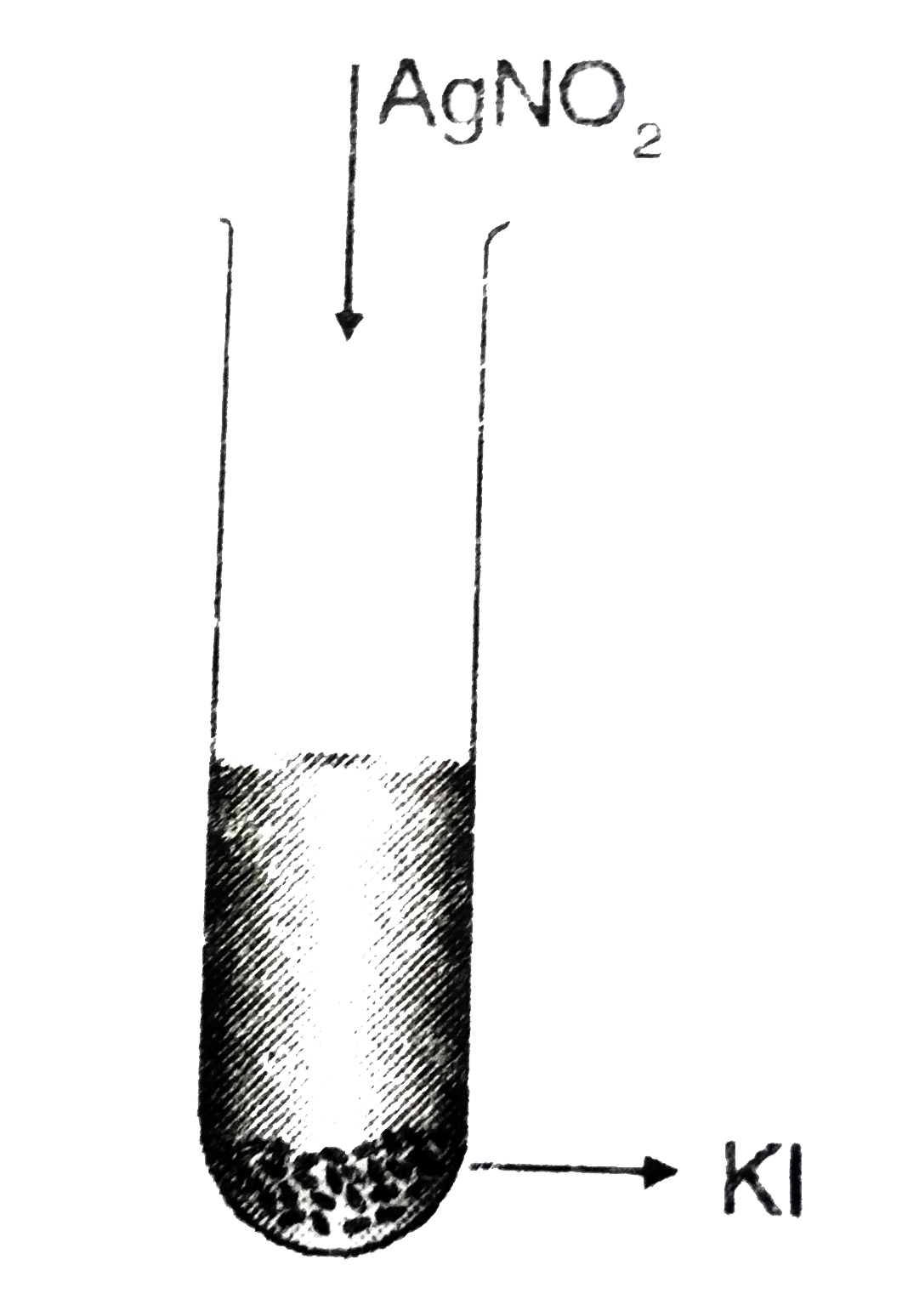A colloidal solution of is prepared by two different methods as shown in the figure below:


What is the charge of colloidal particles in the two test tubes and ?
b. Given reasons for the origin of charge.
(i) (A) negative sol
(B) positive sol
(ii) The origin of charge is the selective adsorption of ions from the dispersion medium. The particles constituting the dispersed phase adsorb only those ions preferentially which are common with their own lattice ions. For example, if silver nitrate solution is added to an aqueous solution of potassium iodide, the silver iodide formed will adsorb negative I-ions (common ions) from the dispersion medium to form a negatively charged sol.
However, if silver iodide is formed by adding potassium iodide to silver nitrate solution, the sol will be positively charged due to the adsorption of Ag+ ions (common ions) present in the dispersion medium.
Topper's Solved these Questions
- SURFACE CHEMISTRYBook:MODERN PUBLICATIONChapter:SURFACE CHEMISTRYExercise:COMPETITION FILE (OBJECTIVE TYPE QUESTIONS) (A. MULTIPLE CHOICE QUESTIONS WITH ONLY ONE CORRECT ANSWER)
Explore 26 Videos
- SURFACE CHEMISTRYBook:MODERN PUBLICATIONChapter:SURFACE CHEMISTRYExercise:COMPETITION FILE (OBJECTIVE TYPE QUESTIONS) (B. MULTIPLE CHOCE QUESTIONS FROM COMPETITIVE EXAMINATIONS)
Explore 49 Videos
- SURFACE CHEMISTRYBook:MODERN PUBLICATIONChapter:SURFACE CHEMISTRYExercise:REVISION EXERCISE (LONG ANSWER QUESTIONS )
Explore 13 Videos
- SOLUTIONSBook:MODERN PUBLICATIONChapter:SOLUTIONSExercise:UNIT PRACTICE TEST
Explore 14 Videos
Similar Questions
A colloidal solution of Agl is prepared by two different methods shown below:
(i) What is the charge of Agl colloidal particles in the two test tubes (A) and (B)?
(ii) Give reasons for the origin of charge.
View SolutionA colloidal solution of ferric oxide is prepared by two different methods as shown below.
a. What is the charge on colloindal particles in the two test tubes (A) and (B)?
b. Give reasons for the origin of charge.
View Solution
Knowledge Check
A sol is prepared by addition of excess of AgNO3 solution in KI solution . The charge likely to develop on colloidal particles is :
ApostiveBnegativeCno chargeDboth charges
A colloidal sol is prepared by the given method in figure. What is the charge on hydrated ferric oxdide colloidal particles formed in the test tube? How is the sol represented?

View SolutionWhat will be the charge on colloidal solutions in the following cases ?

Give reasons for the origin of charge
View SolutionThe sol given below with negatively charged colloidal particles is :
View Solution(a) A colloidal sol is prepared by the given method in figure. What is the charge of AgI colloidal particles in the test tube ? How is the sol formed, represented?
 (b) Explain how the phenomenon of adsorption finds application in Heterogeneous catalysis.
(b) Explain how the phenomenon of adsorption finds application in Heterogeneous catalysis.
(c) Which of the following electroytes is the most effective for the coagulation of Fe(OH)3 sol which is a positively charged sol?
NaCI,Na2SO4,Na3PO4
View Solution(i) What is the role of activated charcoal in gas mask ?
(ii) A colloidal sol is prepared by the given method in figure. What is the charge on hydrated ferric oxide colloidal particles formed in the test tube ? How is the sol represented?
(iii) How does chemisorption vary with temperature?
View SolutionWhat is the charge on the colloidal particles in the following ?
a. Fe(OH)3 sol
b. As2S3 sol
c. Colloidal sol of sillver
View SolutionThe charges on two elements A and B are given below:

what is the formula of sulphate of A?
View Solution

